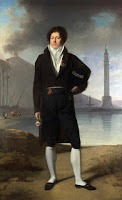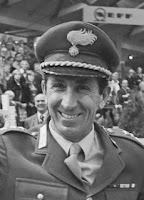Cesare Battisti – patriot and irredentist
Campaigner for Trentino hailed as national hero
Cesare Battisti, a politician whose campaign to reclaim Trentino for Italy from Austria-Hungary was to cost him his life, was born on this day in 1875 in the region’s capital, Trento. As a member of the Social Democratic Workers’ Party, Battista was elected to the assembly of South Tyrol and the Austrian Imperial Council, where he pushed for autonomy for Trentino, an area with a mainly Italian-speaking population. When the First World War arrived and Italy decided to side with the Triple Entente and fight against Austria-Hungary, Battisti decided he could fight only on the Italian side, joining the Alpini corps. At this time he was still a member of the Austrian Chamber of Deputies, so when he was captured wearing Italian uniform during the Battle of Asiago in 1916 he was charged with high treason and executed. Italy now looks upon Battisti as a national hero and he is commemorated in monuments in several places in the country, as well as having numerous schools, streets and squares named after him. At the time of his birth, the son of a merchant, also called Cesare, Trento was part of Tyrol in Austria-Hungary, even though it was a largely Italian-speaking city. Read more…
__________________________________________________________________
Giacomo Facco – composer
The forgotten talent of the musician from Padua
Giacomo Facco, a Baroque composer, was born on this day in 1676 in Marsango, a small town just north of Padova (Padua). Highly regarded during his own lifetime, he was completely forgotten about until 1962 when his work was rediscovered by Uberto Zanolli, a musicologist. Facco is believed to have worked as a violinist and a conductor and he is known to have been given a job in 1705 by the Viceroy of Sicily as a choirmaster, teacher and violinist in Palermo. In 1708 he moved with the Viceroy to Messina where he composed The Fight between Mercy and Incredulity. In 1710 he presented a work dedicated to King Philip V of Spain, The Augury of Victories, in Messina Cathedral. By 1720 it is known Facco was working in the Spanish court because his pay is mentioned in a report dating from that year. He is later named as clavichord master to the Spanish princes. At the height of his success he was commissioned to compose an opera to celebrate the marriage of one of the princes in 1721. He then seems to have fallen out of favour and was just employed as a violinist in the orchestra of the Royal Chapel until his death in Madrid in 1753. Read more…
________________________________________________________________
Eugenio Corti - soldier and writer
Author drew on his experiences on the front line
Eugenio Corti, the writer most famous for his epic 1983 novel The Red Horse, died on this day in 2014 at the age of 93. He passed away at his home in Besana in Brianza in Lombardy, where he had been born in January 1921. The Red Horse, which follows the life of the Riva family in northern Italy from Mussolini's declaration of war in the summer of 1940 through to the 1970s, covers the years of the Second World War and the evolution of Italy's new republic. Its themes reflect Corti's own view of the world, his unease about the totalitarianism of fascism and communism, his faith in the Christian Democrats to tread a confident path through the conservative middle ground, and his regret at the decline in Christian values in Italy. It has been likened to Alessandro Manzoni's novel I promessi sposi - The Betrothed - for its strong moral tone and for the way that Corti employs the technique favoured by Manzoni of setting fictional characters in the novel against a backcloth of actual history, with real people and events written into the plot. The Red Horse, which took Corti more than a decade to write, became a literary phenomenon in Italy, selling so many copies it needed to be reprinted 25 times. Read more…
_________________________________________________________________
Ugo Betti - playwright
Judge who combined writing with legal career
Ugo Betti, a playwright whose works exploring facets of the human condition are considered by some to be the finest plays written by an Italian after Luigi Pirandello, was born on this day in 1892 in Camerino in Le Marche. Betti wrote 27 plays, mainly concerned with evil, guilt, justice, atonement and redemption, largely in his spare time alongside a career in the legal profession. Although he started life in what was then a remote town in the Apennine mountains, about 75km (47 miles) inland from the Adriatic coast and a similar distance from the city of Perugia, Betti moved with his family at an early age to Parma in Emilia-Romagna. He followed his older brother Emilio in studying law, although his progress was interrupted when he was enlisted as a volunteer in the army after Italy entered the First World War. He was captured in the disastrous Battle of Caporetto and interned in a German prisoner of war camp. By chance, he found himself in the company of two writers, Carlo Emilio Gadda and Bonaventura Tecchi, who encouraged him in his own writing. His first collections of poems were written while he was in German captivity. Read more…
Home



























